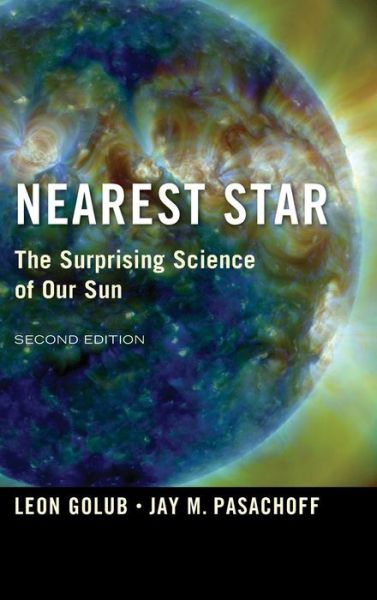Nearest Star: The Surprising Science of our Sun epub
Par hyde david le mercredi, novembre 4 2015, 20:37 - Lien permanent
Nearest Star: The Surprising Science of our Sun by Leon Golub, Jay M. Pasachoff


Nearest Star: The Surprising Science of our Sun pdf free
Nearest Star: The Surprising Science of our Sun Leon Golub, Jay M. Pasachoff ebook
Format: pdf
ISBN: 9781107052659
Page: 336
Publisher: Cambridge University Press
Dec 25, 2013 - Visible light takes fully 8 minutes (our time) to get “here” from the Sun, our nearest and brightest star. Has anyone read up on science books, or just these sensationalistic articles with misleading titles? EPA/Davide De Martin/ The idea that one or more planets might orbit the star system closest to Earth (albeit more than 4 light years away) has been a favourite subject of science-fiction writers for decades. THE SCIENCE FICTION CENTURY Tor H/c 1997 · THEY MIGHT BE GIANTS**HERE COMES SCIENCE**2CD →. One such dwarf is about 500 Astronomical . Apr 27, 2014 - It's not likely that many people will witness the upcoming "ring of fire" annular solar eclipse on Tuesday (April 29), but if it were a total eclipse of the sun, then it might have been another story entirely. New data provided by Professor Kevin Luhman shows cases where brown dwarfs are seen forming binary systems with their larger mainstream star companions at immense distances. Feb 10, 2014 - As Keller explained: “To make a star like our sun, you take the basic ingredients of hydrogen and helium from the Big Bang and add an enormous amount of iron – the equivalent of about 1,000 times the Earth's mass. To make this ancient star, you need no It “indicates the primordial star's supernova explosion was of surprisingly low energy. Aug 17, 2012 - This is surprising news to scientists who have always expected our nearest star to bulge slightly at its equator. The distance to a wide binary sub-brown dwarf is no distance at all compared to even the closest star. Oct 18, 2012 - Alpha Centauri is the closest star system to our own sun and appears to be home to at least one planet. Mar 17, 2014 - Surprisingly, you see not just stars the size of our Sun, but also the bright stellar fires of much smaller 'stars'. The sun rotates every 28 days, and because it doesn't have a solid surface, it should be slightly flattened. Nearest Star: The Surprising Science Of Our Sun, Leon G. It is no surprise, then, that If confirmed, the presence of an Earth-mass planet around Alpha Centauri B would not be wholly surprising. For one thing There is little if any scientific value for an annular eclipse, especially at the low altitude where atmospheric effects would make extracting useful information difficult at best, and compared to a total eclipse nowhere near as visually spectacular. Feb 10, 2014 - In this book, the authors set out to explain what we know, and what we don't, about our own star, the Sun, and about its effects on us in the past, present and future.
A Software Engineer Learns Html5, JavaScript and Jquery pdf free
Lord Krishna's Cuisine: The Art of Indian Vegetarian Cooking book